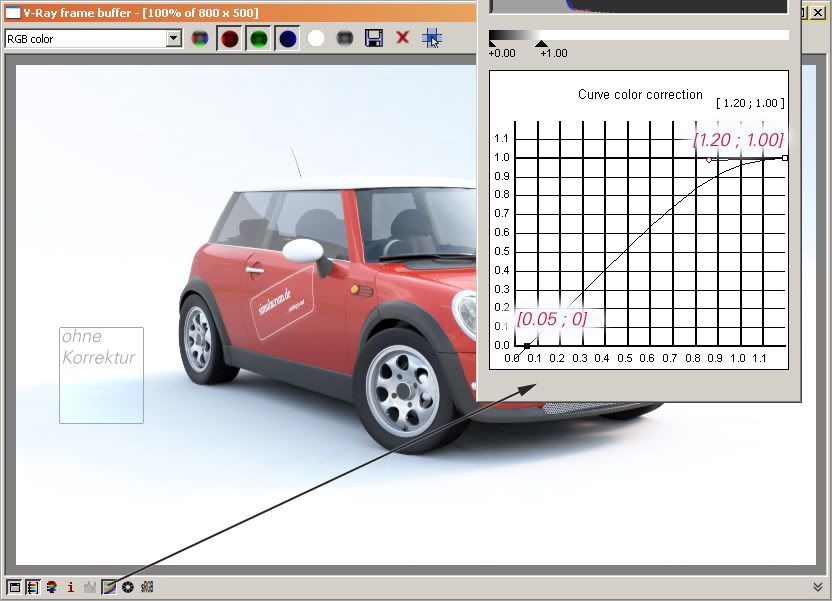I suppose this isn't a VFR issue, but it would be great if color mapping was a post-render process, so you could tweak the settings without waiting for a new rendering...
Announcement
Collapse
No announcement yet.
color mapping
Collapse
X
-
Tags: None
-
Re: color mapping
If that's a workflow that you're looking to use, then you can simply do your tone mapping in another application that's dedicated to HDRs. This will definitely open up a much more options for you as the tone mapping choices in V-Ray are actually relatively limiting when compared to what those apps offer. All you would need to do on the V-Ray side of things is work with linear color mapping and save as an HDR.
As to other applications here are a few of the main ones that are being used to day... Dynamic Photo HDR, FDR Tools, Photomatrix, Picturenaut, or Essential HDR. All of those tools should have something to offer in terms of tone mapping operators (TMOs). Global operators are ones that work on the whole image at one time (this is what V-Ray does) and can be some what limiting. Local TMOs are much more flexible and can generally lead to much more control of the results. Most of the advanced HDR->LDR conversion is done with these local TMOs, so they are definitely worth looking into.
A great book that explains a whole lot about HDRI is HDRI Handbook. I highly recommend it as it gives a whole lot of information about almost everything HDRI releated. The guy who wrote it has a site www.hdrilabs.com that is very good as well.Damien Alomar<br />Generally Cool Dude
-
Re: color mapping
Emil, you can do it per Framebuffer control. So far I understand the Reinhard color mapping aplly something like an exponential curve with extra control. You can do something like this per curve control - I do it very often. Also good, you can save the curve. I like this manual colormapping, because it allow to fine adjust the the burn out effect and the darkness of the shadows. So, you should get a look like known from analog photos.
Here a quote from an other thread, where I described the method a little.
That I don't like is like Vray render bright areas per default. There is no soft transition between the bright burnedout area, for example at interior windows and the darker areas around.
I use the framebuffer to simulate an anlog film effect with flat upper curve. This works like a lower burn value, but allow a better fine adjust. Often I touch the lower end too and move it or use the control point to get a straigt curve until the flat end. Here an example:
(it's from my german training material - ohne Korrektur means without correction)
 www.simulacrum.de - visualization for designer and architects
www.simulacrum.de - visualization for designer and architects
Comment
-
Re: color mapping
Excellent! That'll keep me busy for a while! Thanks!emil mertzel
vray4rhinoWiki
Lookinglass Architecture and Design
Comment
Comment